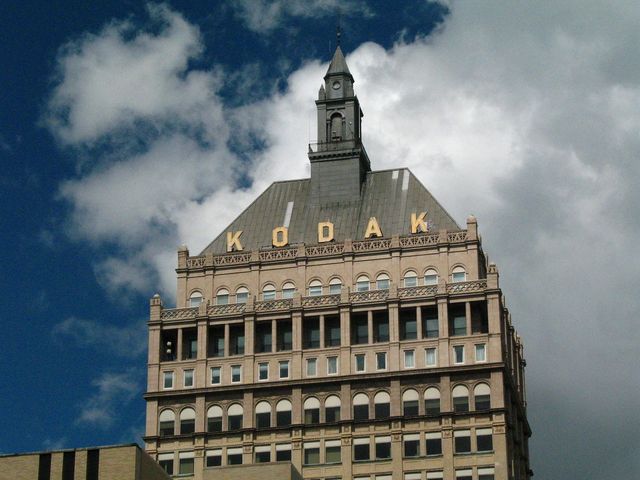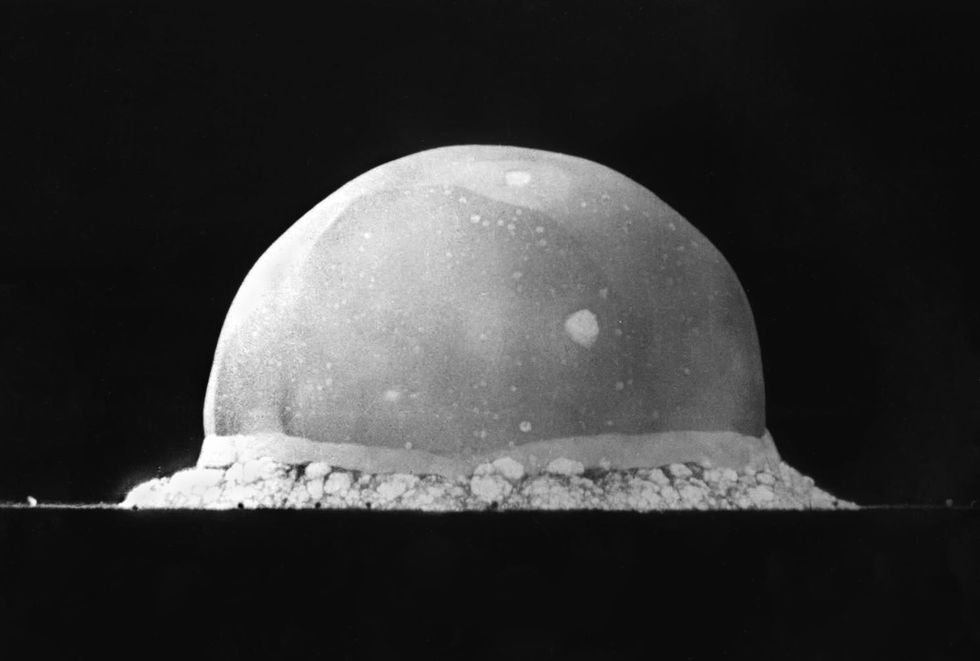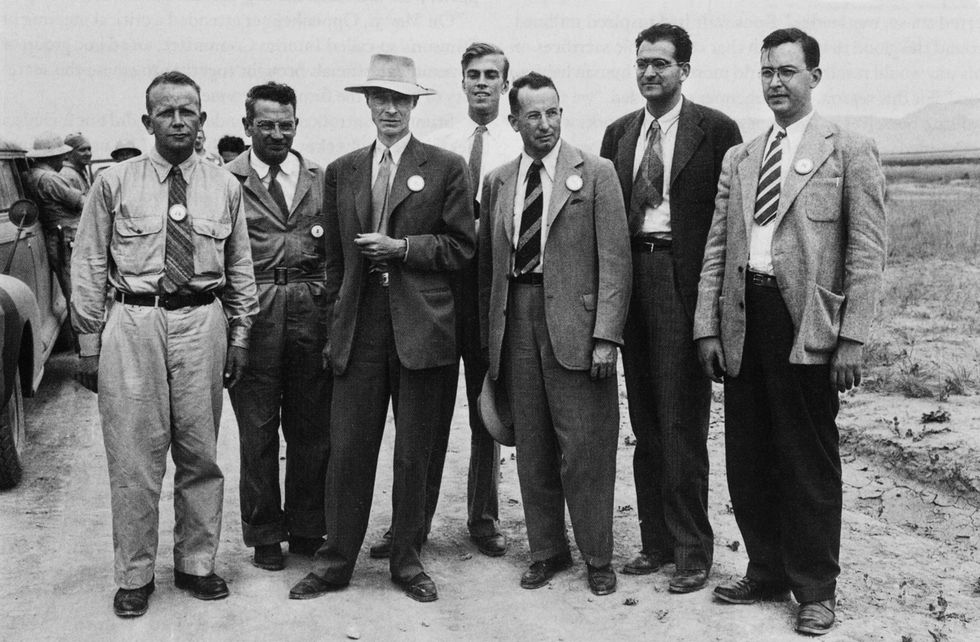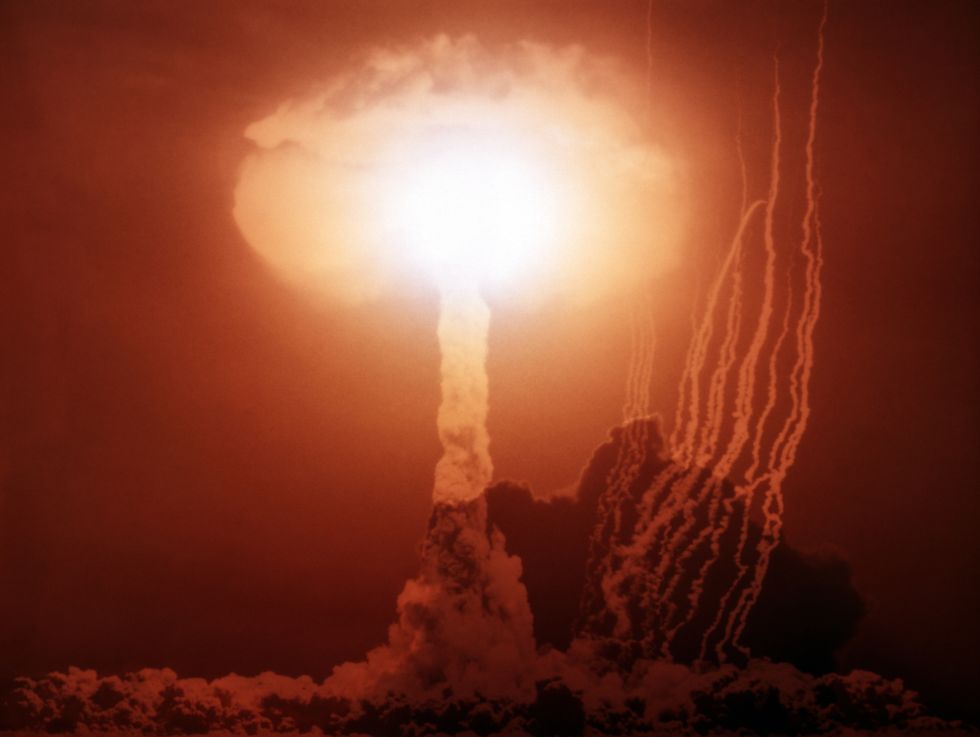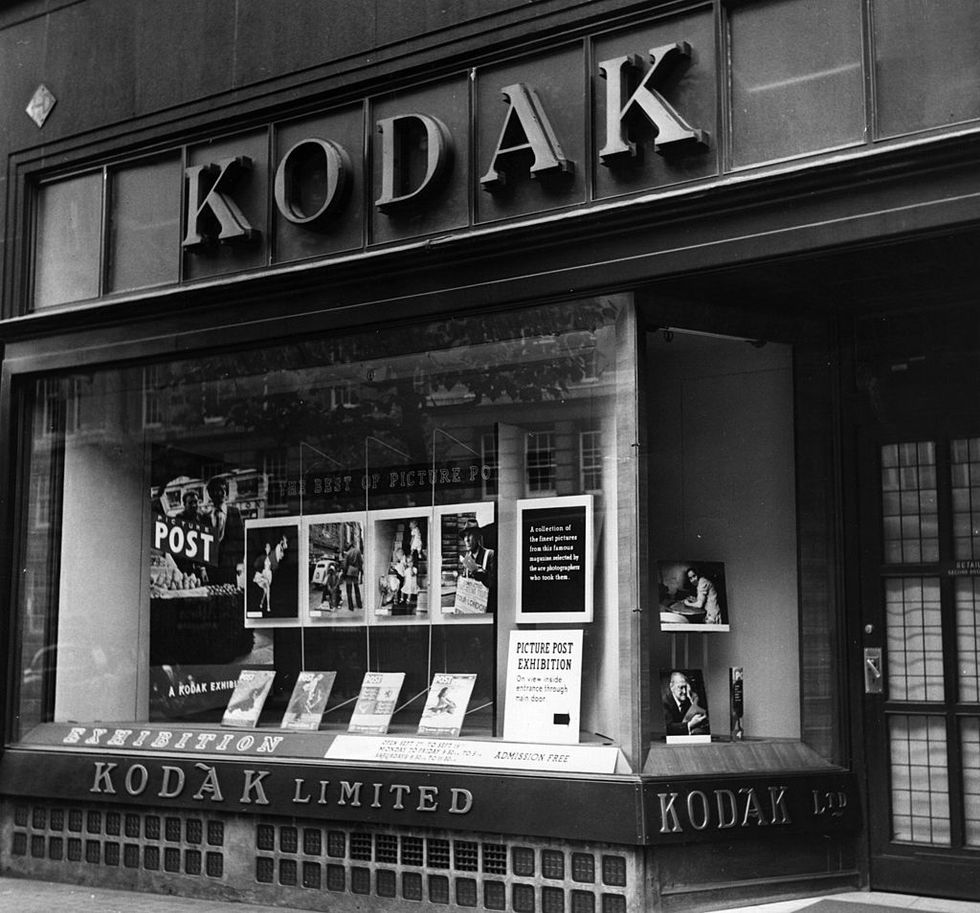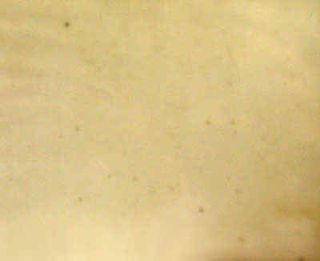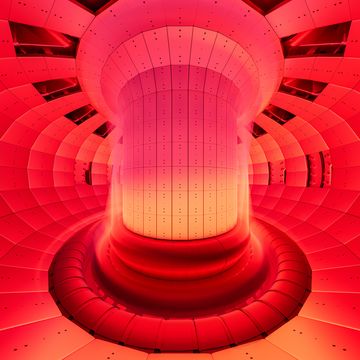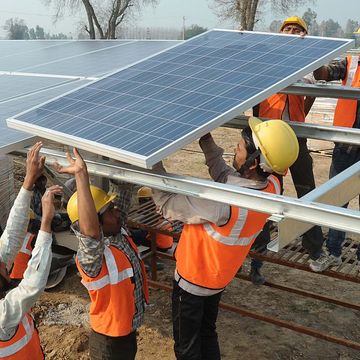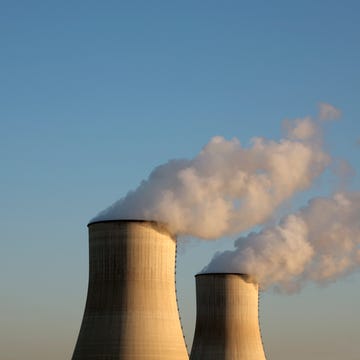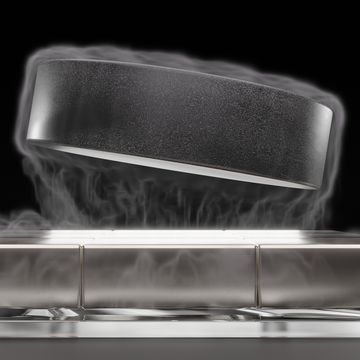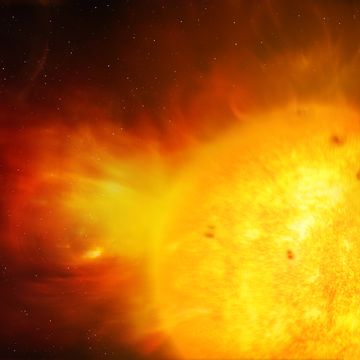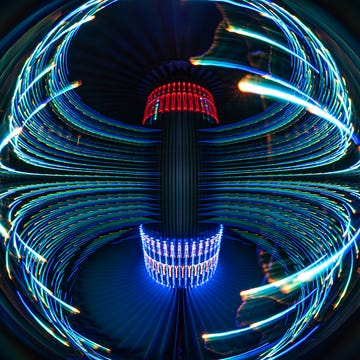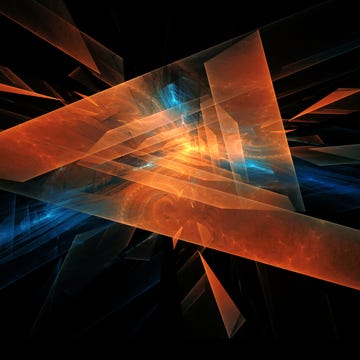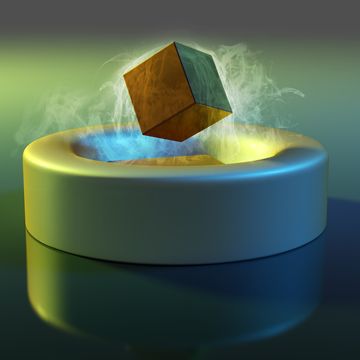The ground shook, a brilliant white flash enveloped the sky, and the world changed forever. Code name "Trinity," the bomb test at dawn on July 16, 1945 in Alamogordo, New Mexico was the first large-scale atomic weapons testing in history. Only three weeks later two atomic bombs were dropped on Japan.
More than 1,900 miles away from Alamogordo, at the Rochester, NY headquarters of Eastman Kodak, a flood of complaints came in from business customers who had recently purchased sensitive X-ray film from the company. Black exposed spots on the film, or "fogging," had rendered it unusable. This perplexed many Kodak scientists, who had gone to great lengths to prevent contaminations like this.
Julian H. Webb, a physicist in Kodak's research department, took it upon himself to dig deeper and test the destroyed film. What he uncovered was shocking. The fogging of Kodak's film and the Trinity test in New Mexico were eerily connected, revealing some chilling secrets about the nuclear age.
It all started when Kodak had a problem with its packaging. Even today, X-ray film is highly sensitive (much more so than regular photographic film) and subject to ruin due to dirt, scratches and even minimal light exposure. Proper packaging and protection is essential to make sure the film gets from manufacturing to shipping to the customer's place of business safely. According to an article Webb would write in 1949 for the American Physical Society, the paper and cardboard used for packaging in the '40s were often salvaged from wartime manufacturing plants where radium-based instruments were also produced. Radium is a naturally occurring radioactive element that can cause flecks of spots or fogging when "in intimate contact with (sensitive film) for a period several weeks." During wartime, Kodak took precautions to avoid radium contamination. It moved packaging manufacturing to mills where Kodak had full control over the raw materials.
One of these mills was located along the Wabash River in Vincennes, Indiana; it specialized in producing strawboard, used as a stiffener board between sheets of film. When Webb investigated the mysterious fogging in 1945, he found that it originated not from the X-ray film itself but the packaging, which he tracked to this particular mill, and specifically, the production run of strawboard from August 6, 1945. After testing the radioactive material on the strawboard, he discovered—rather alarmingly—that the spots on the film were not caused by radium nor any other naturally occurring radioactive material, but "a new type radioactive containment not hitherto encountered." What was this unknown radioactive material, he must have wondered, and what was it doing in southwest Indiana?
"Prolific Fission Products"
In January 1942, less than four years after Berlin chemists first split the uranium atom, the United States government secretly launched the Manhattan Project. Spurred by a letter from Albert Einstein saying that the Germans were pursuing the bomb, President Franklin Roosevelt approved federal funding for uranium research in 1939. Later that year, reports indicated it was possible to create an "extremely powerful bomb" from enriched uranium (later plutonium was discovered to have similar destructive properties). Eminent scientist Vannevar Bush hastily compiled a list of resources, including materials, equipment, money, and scientists, needed to make the bomb a physical reality. A month after Pearl Harbor pushed the U.S. into the war, FDR approves Bush's list with one simple handwritten note, "V.B. OK-returned-I think you had best keep this in your own safe FDR." Three days after Christmas in 1942, the "Manhattan Project" was officially authorized.
By 1945, the United States had a plutonium-based atomic bomb ready for testing. Called "Gadget," the experiment was set for the Trinity test site, so named by Manhattan Project leader Robert J. Oppenheimer in homage to the work of English poet John Donne. At 5:30 a.m. on a hot desert morning, the atomic age began. The bomb exploded and released 18.6 kilotons of unimaginable power. In a nanosecond, an orange fireball reached the heavens, followed by a column that quickly flattened into now-iconic image of the mushroom cloud. The test was a tremendous success—at least in the eyes of those hoping to use it as a weapon. It far exceeded expectations in terms of power as the blast released as much as three times more force than anticipated. It was reported that the fireball could be seen as far as 250 miles away. Soon, Julian Webb would discover the impact was felt much further.
While he was studying the Indiana samples, Webb got word that a particular production run of strawboard from a plant in Tama, Iowa was also contaminated and fogging the Kodak film it carried. While Tama was 450 miles from Vincennes, there were striking similarities. The two production runs of strawboard had been completed within a month of each other. Tama's radioactive spots also failed the radium test, meaning the cause was something else. Most telling, however, was that both mills sat next to rivers, with Vincennes on the Wabash River and the Iowa River cutting through Tama.
Webb found that the strawboard from both mills had a significant concentration of beta-particle radiation activity but little to no alpha-activity. (Beta-particle radiation can penetrate paper, human skin and are sometimes considered dangerous. Alpha-particle radiation is stopped by paper, easily absorbed and generally considered safe if not ingested). Additionally, photographic evidence allowed Webb to estimate the half-life of the artificial radioactive material he was seeking at approximately 30 days. The results corresponded to the presence of an artificial radioactive material he would later identify as Cerium-141, which is "one of the more prolific fission products of the atom bomb."
Furthermore, Webb concluded there was no possible way the straw could be the carrier of the containment, since it was stored in warehouses (and not outside) for a considerable amount of time prior to being used. Had the Cerium-141 gotten directly into the straw, it would have decayed by the time the straw was processed, rendering the radiation hardly detectable. This brought Webb to a frightening explanation: The contamination came from the river water. Additional evidence would fall in the rain. According to Webb, "stronger activity occurred in the strawboard" after periods of heavy precipitation, establishing that the radioactive material was being deposited via precipitation and came from a far-flung place.
While it is unclear whether Webb knew about the Trinity test when he was conducting his research in 1945, his report from 1949 is unabashedly clear: "The most likely explanation of the source of this radioactive contaminant appears to be that it consisted of wind-borne radioactive fission products derived from the atom-bomb detonation in New Mexico on July 16, 1945."
Keeping It Quiet
Webb wasn't the only one who knew fallout could travel vast distances. As the years have passed, it's become increasingly clear that the United States government knew this fact early on. Immediately following the Trinity tests, the Manhattan Project's chief of radiological safety, Stafford Warren, warned that the tests needed to be conducted at least 150 miles from civilian populations. In 1948, U.S. Air Force Meteorologist Col. B. G. Holzman recommended establishing a new nuclear test site on the East Coast, rather than in the west, because western winds carry fallout across the continental United States. Despite this recommendation, the Nevada Proving Ground (later theNevada Test Site) was established in 1950 only a hundred miles from Las Vegas. According to a 1997 article for the Bulletin of Atomic Scientists entitled "Worse than we knew," the reason for this reckless choice was that weapons labs were nearby, which would accelerate "the pace of the weapons development program."
Pat Ortmeyer was the coauthor of this article in which she and Arjun Makhijani dug deep into the National Cancer Institute's report that because of the Nevada nuclear tests, a vast majority of the American public was exposed to the cancer-causing radioactive element Iodine-131. "What is so appalling was that it was the system... that it was by design, to keep the public in the dark like that," Ortmeyer tells Popular Mechanics. "This was partly because of the context... we were at war... but when you look at the history of nuclear production, that's the norm... downplaying [health risks]."
On January 27, 1951, the first atomic detonation at the new Nevada Proving Ground took place. Days later and 2,500 miles away, a Geiger counter at Kodak's headquarters in New York state measured radioactive readings 25 times above normal after a snowstorm. Declassified 1952 documents obtained by Popular Mechanics reveals that Kodak alerted the Atomic Energy Commission about this out of concern this testing would wreck its film just as had happened in 1945. The AEC responded that it would look into it, but assured Kodak there was little reason to worry, even allowing the company to issue a press release to the Associated Press stating that snow "that fell in Rochester was measurably radioactive..." but "there is no possibility of harm to humans and animals."
In March 1951, a frustrated Kodak threatened to sue the U.S. government for the "considerable amount of damage to our products resulting from the Nevada tests or from any further atomic energy tests..." Finally the company and the government came to an agreement. The AEC would provide Webb, by now the head of Kodak's physics division, with schedules and maps of future tests so that Kodak could take the necessary precautions to protect its product. In return, the people of Kodak were to keep everything they knew about the government's Nevada nuclear testing a secret.
The Cost of the Silence
Did Kodak have a responsibility to tell the American public about the fallout? Says Stephen Schwartz, an independent nuclear weapons expert and policy analyst who edited and co-wrote the book Atomic Audit for the Brookings Institution in 1998: "Did they have a moral or ethical responsibility? I think you could make a strong case that they did," he says. "But I wouldn't look at Kodak with today's eyes. They were doing their jobs and perhaps simply didn't know any better."
Ortmeyer agrees: "I think that the responsibility fell to the government...[Kodak] knew the impact it had on their film, but for them to speak out on a public health issue... that wasn't their field of expertise. I can only surmise that in the era of the Manhattan Project, if you are behind the curtain and sworn to secrecy.... You are not going to go there."
In 1997, the National Cancer Institute released findings that linked the Nevada nuclear testing to the release of Iodine-131 which can lead to thyroid cancer. In response, a Congressional hearing questioned why the government withheld such information. Led by Sen. Tom Harkin (who incorrectly said that Kodak discovered the radioactive fallout because of "corn husks," not strawboard), the hearing made clear that this was a public health crisis, and that every single American alive at the time was threatened by the radioactive fallout. Julian Webb knew this five decades earlier when he discovered traces of faraway weapons testing in America's water supply. Why no one told the American people remains a question today.
Special thanks to Pat Ortmeyer for providing materials for this story.
We contacted Kodak, who chose not to comment.
Matt is a history, science, and travel writer who is always searching for the mysterious and hidden. He's written for Smithsonian Magazine, Washingtonian, Atlas Obscura, and Arlington Magazine. He calls Washington D.C. home and probably tells way too many cat jokes.
